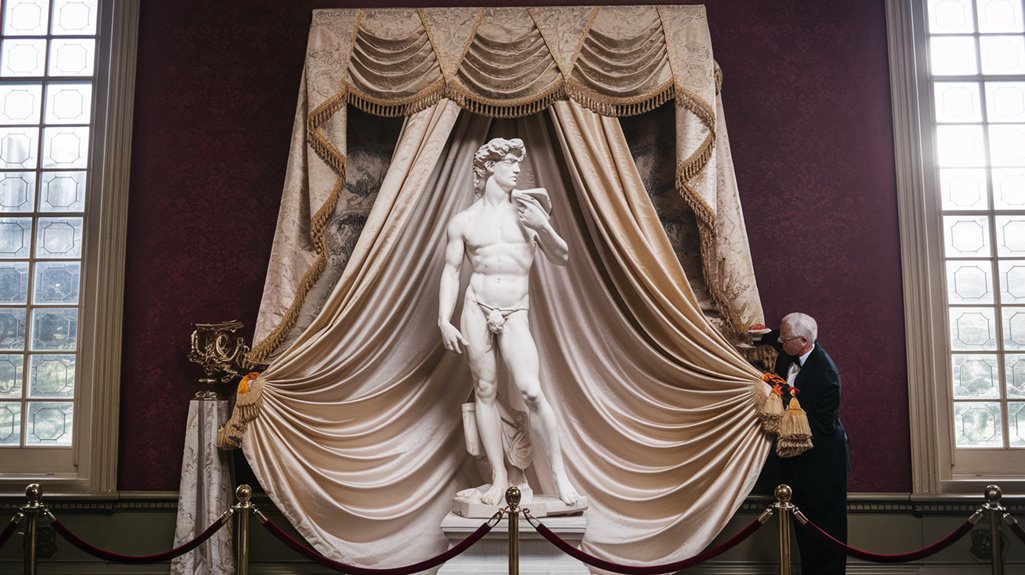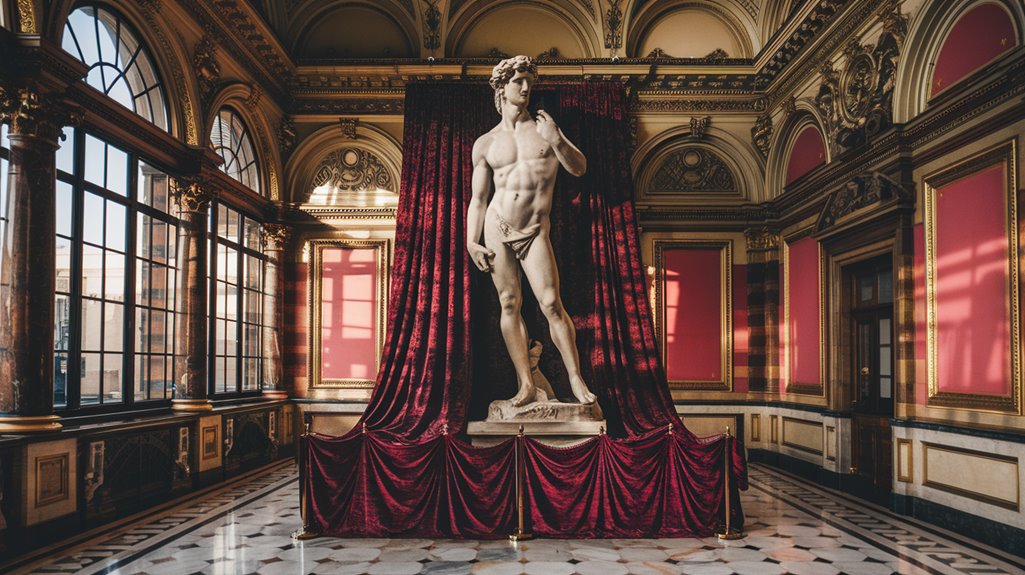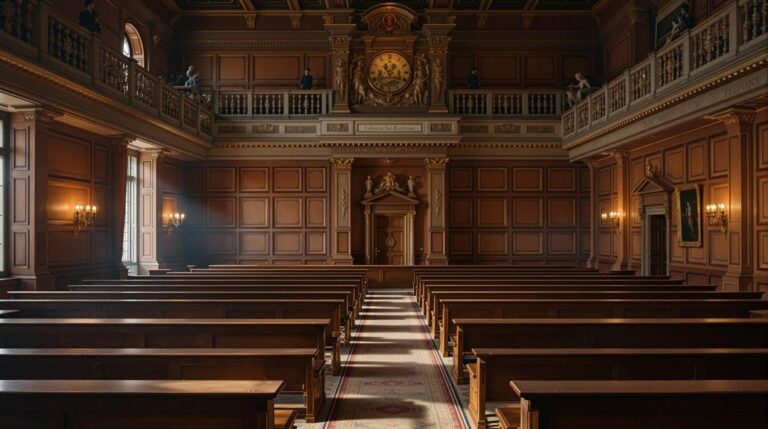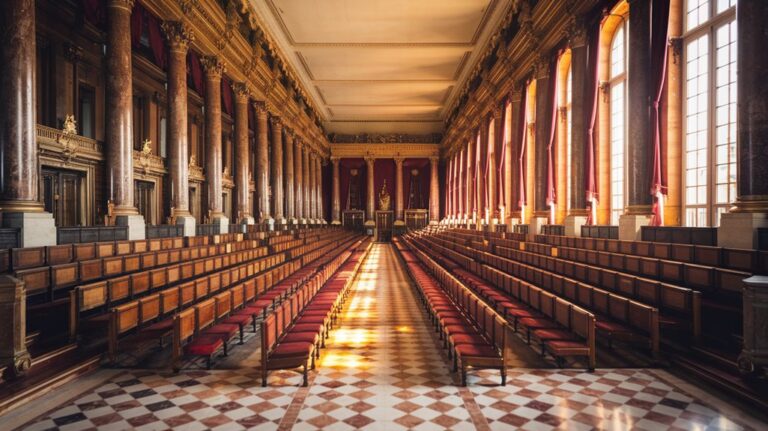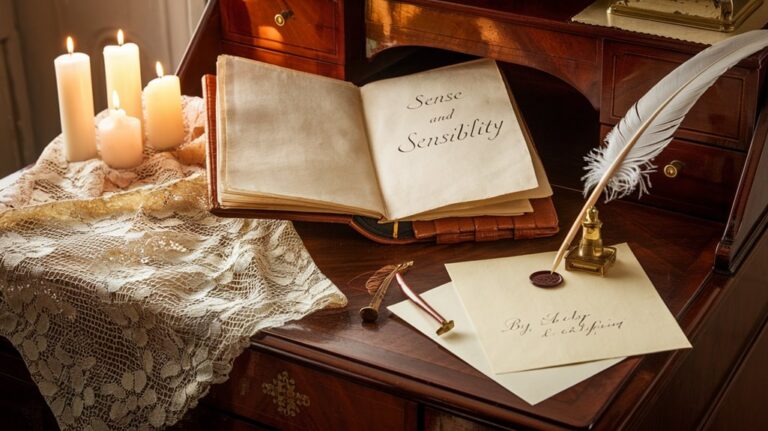Queen Victoria Ordered Cover-Up of Michelangelo’s David Replica
Like a clash between two worlds, you'll find an intriguing tale of Victorian sensibilities colliding with Renaissance mastery. When the Grand Duke of Tuscany presented Queen Victoria with a full-size replica of Michelangelo's David in 1857, he couldn't have anticipated the royal response. You might think the Queen would've embraced this masterpiece of classical art, but her reaction sparked a curious solution that would define an era's complex relationship with artistic nudity.
The Royal Gift That Caused a Stir
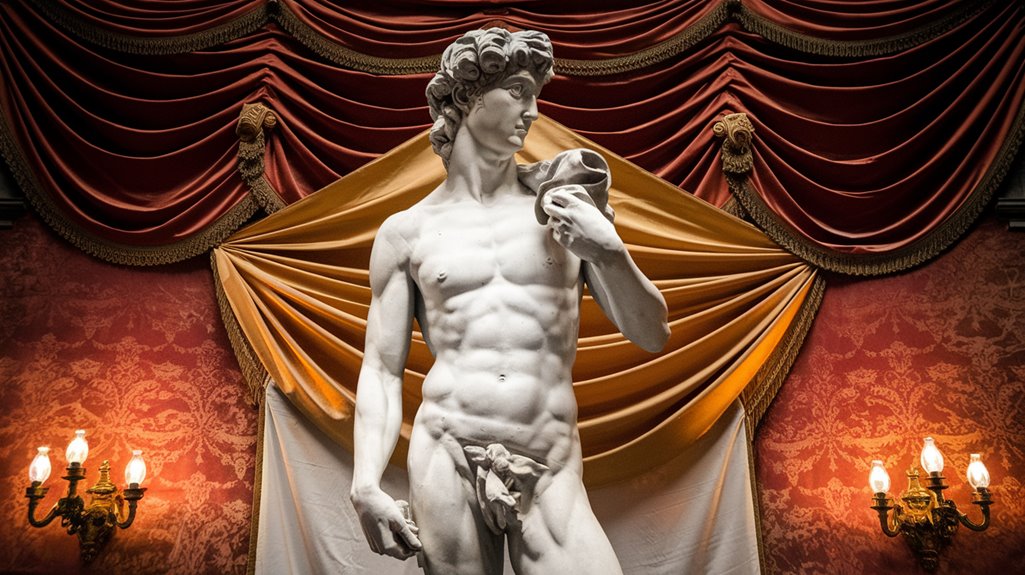
Three crates carrying a massive plaster cast of Michelangelo's David arrived at South Kensington in the 1850s, marking the start of an unusual diplomatic episode.
You'll find it interesting that this five-meter-tall replica wasn't just any ordinary gift – it came from the Grand Duke of Tuscany as a peace offering after he'd refused to send a Ghirlandaio painting to London.
The gift implications proved more complex than expected when Queen Victoria encountered the statue's nudity.
A detachable fig leaf was specially commissioned to maintain Victorian modesty standards.
While her exact reaction isn't recorded in her journals, reports suggest she was shocked, raising questions about royal decorum.
The masterful cast, created by Florentine artist Clemente Papi from a mold of the original marble, became one of the V&A's first acquisitions at its current site, though its arrival wasn't accompanied by any private communication from the Grand Duke.
The fig leaf continued to serve its purpose during royal visits until the reign of Queen Mary, representing the last time such modesty measures were employed.
A Fig Leaf for Modesty's Sake
Queen Victoria's shock at David's nudity sparked an ingenious solution in 1857 – a removable plaster fig leaf.
You'll find it fascinating that this custom-made cover-up was attached using two hooks and only deployed during royal ladies' visits, reflecting the strict cultural attitudes of Victorian Britain.
The historic cast stands proudly among over 60 reproductions in the recently reopened gallery.
The massive fig leaf, created by D. Brucciani & Co., measures an impressive 40 centimeters in height.
This wasn't the first instance of artistic censorship, though.
Consider these notable examples:
- Florence's original David wore 28 copper leaves in 1504
- The Vatican launched a campaign to cover nude figures in the 16th century
- Many 19th-century artworks faced similar modifications
The fig leaf remained in use until Queen Mary's era and now rests in a display case behind David's pedestal at the V&A Museum.
It's a remarkable indication of how drastically views on nudity in art have evolved over time.
The Remarkable Journey of David's Cast
While Michelangelo's original David stands in Florence, its remarkable plaster twin commenced on an extraordinary journey in 1847. Grand Duke Leopold II commissioned master craftsman Clemente Papi to create what would become a masterpiece of artistic craftsmanship in its own right.
You'd be amazed to learn that Papi used over 1,500 individual mold pieces to capture every detail of the original statue. After a decade of meticulous work, the cast was completed in 1857 and presented to Queen Victoria, marking a significant cultural exchange between Italy and Britain.
The cast made its way to London's Victoria and Albert Museum, where it continues to captivate visitors in the Italian Cast Court. Queen Victoria famously requested a removable fig leaf to maintain modesty during royal visits. Recently restored in the Weston Cast Court, this plaster David remains a representation of Victorian-era technical achievement. The original David was carved from white Carrara marble, requiring Michelangelo's expertise with specialized steel chisels to achieve its perfect form.
Victorian Values Meet Renaissance Art
The arrival of Michelangelo's David replica in Victorian England sparked an immediate clash between Renaissance artistic freedom and nineteenth-century moral sensibilities.
Queen Victoria's shocked reaction to the statue's Renaissance nudity perfectly captured the era's prevailing attitudes toward art and morality.
Victorian prudery demanded immediate action, leading to these notable measures:
- A removable plaster fig leaf was commissioned to cover David's intimate areas
- The covering could be adjusted depending on the gender of visitors
- Female members of the royal family were shielded from the "offensive" display
You'll find it fascinating that this wasn't an isolated incident.
The plaster cast arrived at the Victoria and Albert Museum in 1857 through Queen Victoria's direct donation.
The censorship reflected broader Victorian values that sought to sanitize art across institutions.
What you might consider natural artistic expression today was deemed scandalous enough to require modification in Victorian times.
The censorship tradition dated back to the Vatican's Fig Leaf Campaign in 1541, which targeted nude figures in religious artwork.
The Legacy of David's Cover-Up
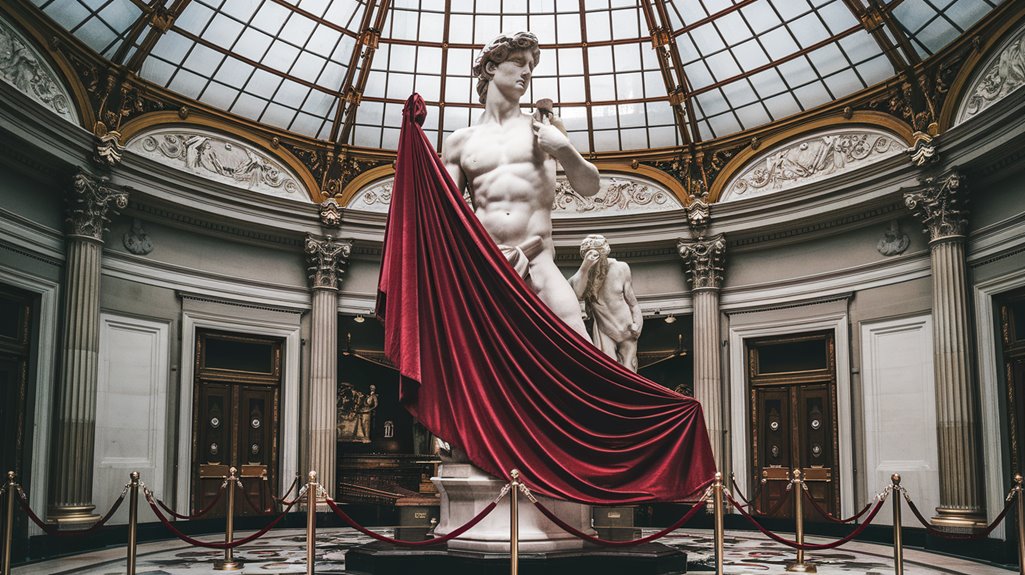
Modern debates about artistic censorship can trace their roots to David's historic fig leaf saga.
You'll find that since 1504, various attempts to cover the statue's nudity have sparked an ongoing censorship debate, from Florence's copper garland to Queen Victoria's removable plaster leaf.
 white Carrara marble, represents Michelangelo's masterful dedication to anatomical detail and artistic freedom.
white Carrara marble, represents Michelangelo's masterful dedication to anatomical detail and artistic freedom.
You can see this reflected in recent controversies, like Dubai's 2020 Expo where David's lower half was obscured to respect Islamic values, or Jerusalem's 1995 rejection of a nude replica.
The Victoria and Albert Museum in London still maintains a detachable fig leaf for their plaster cast, preserving this unique aspect of censorship history.
While many censored artworks have been restored to their original form, David's legacy continues to challenge society's views on nudity in art.
The statue remains at the center of discussions about artistic freedom versus cultural accommodation.

